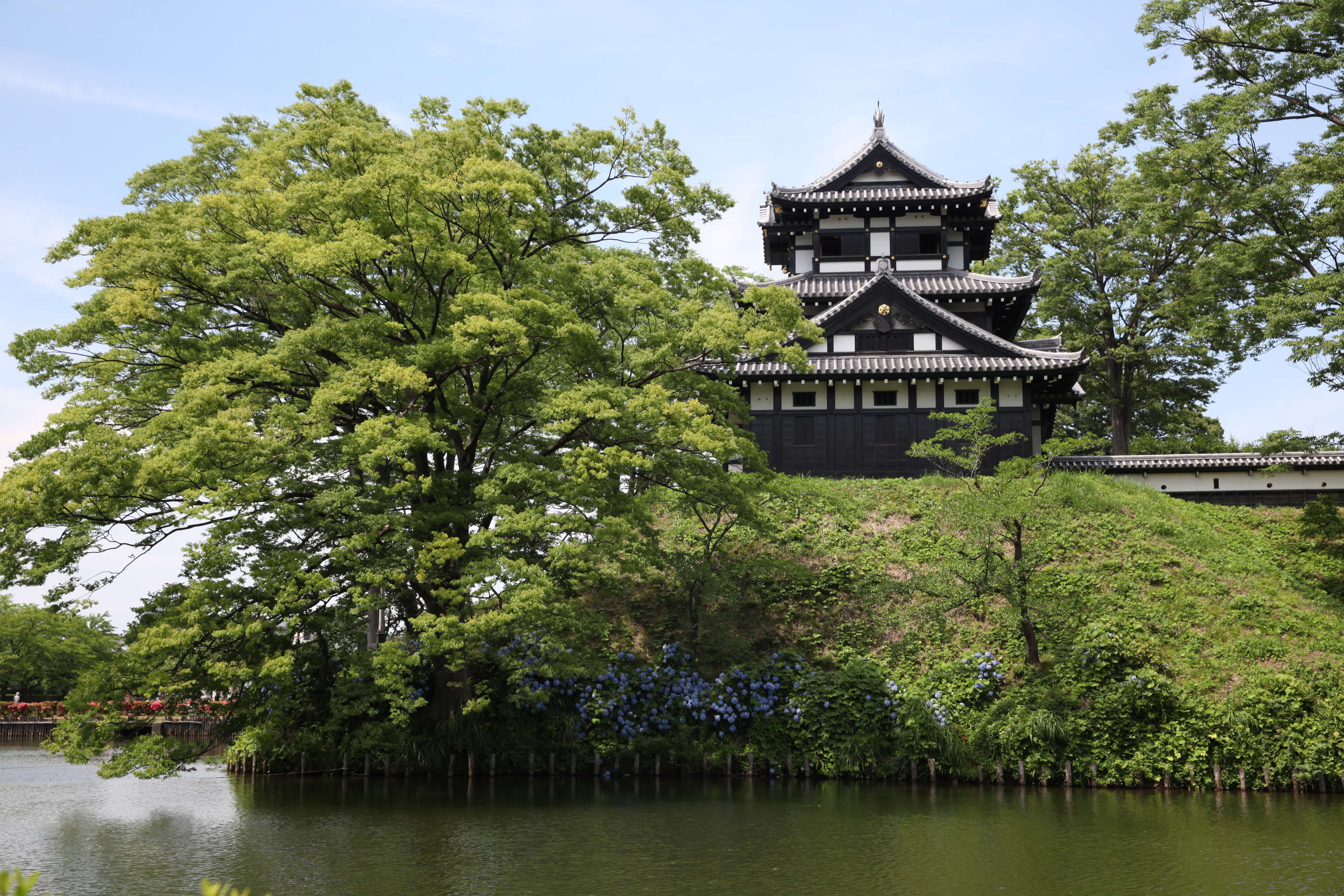
Niigata Prefecture, accessible from Tokyo through the Hokuriku or the Joetsu Shinkansen, is famous for its rice, natural scenery, and tons of snow. There are a plethora of things to do in the prefecture, so let’s take a quick look at some highlights!
Niigata Rice Fields
Niigata rice is known to be some of the best in the country. Rice is traditionally known to be grown on terraced platforms, at times flooded with water which reflect the sunlight and beautiful surroundings. In the city of Tokamachi, you can find some terraced rice fields, one of the most famous is known as Hoshitoge Rice Field Terraces. Roughly translated to ‘star-pass’, the field can reflect the light of the sky perfectly at times, maybe that could be a reason for the name! Spring is a great time to visit the fields, as the surroundings are lit up by the amazing pink of sakura trees, while in summertime the fields are filled with water and reflect everything that flies above them. The area is best accessed by car or taxi, from Matsudai Station. Bicycles can also be rented, but be prepared for it to take some time. Don’t forget to have some of the famous ‘koshihikari’ rice dishes, and ‘hegisoba’, a type of soba noodles made with seaweed.
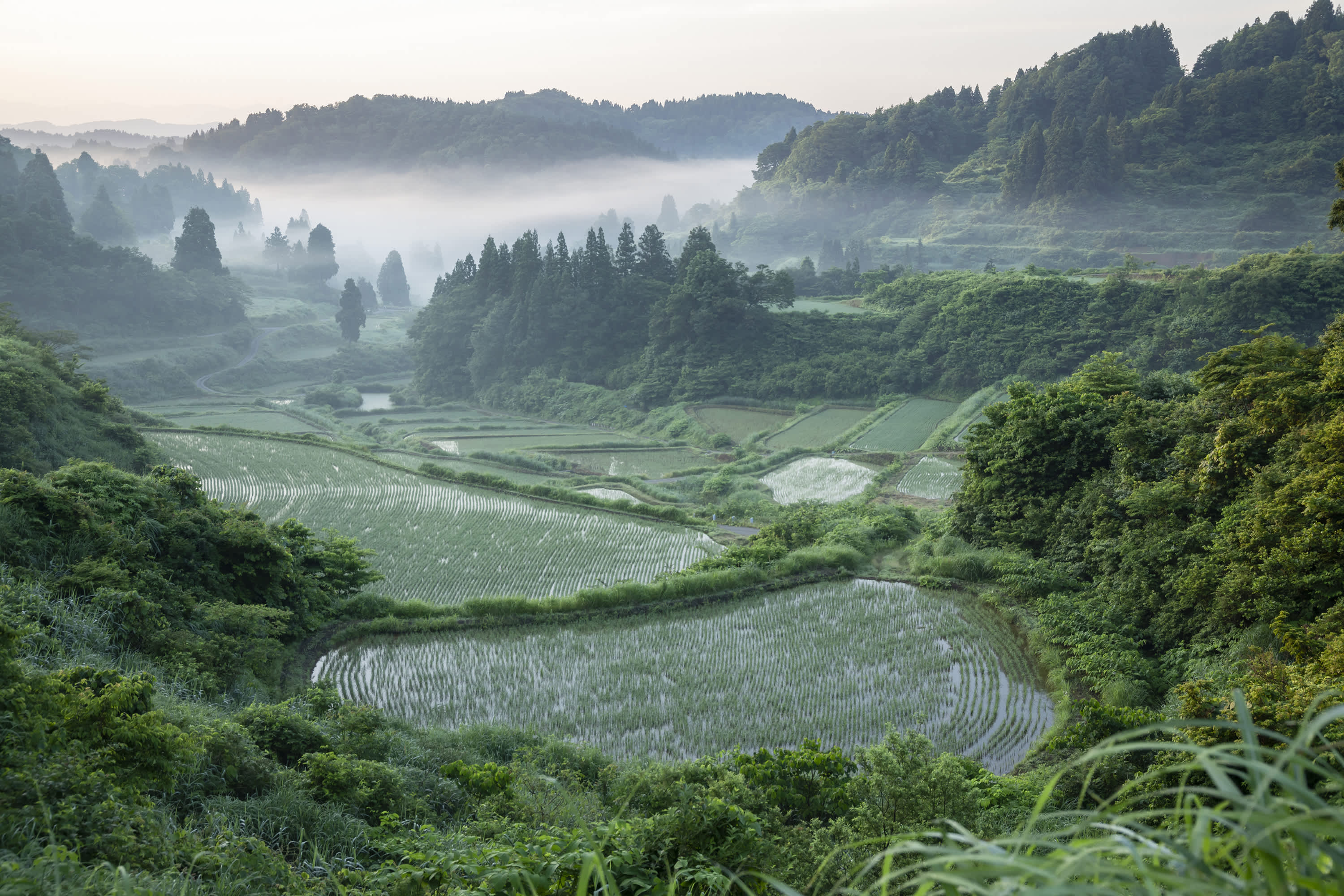 The Hoshitoge Rice Fields
The Hoshitoge Rice Fields
Sado Island
Nestled off the coast of Niigata, a boat ride away from Niigata City is Sado Island. The island is famous for boat rides, gold, taiko drums, and being a former penal island. Surprisingly, the island is the 6th largest in area out of all the Japanese islands! With more than 250km of coastline, there is plenty to explore on this wonderful island. With famous rice and sake abound, it makes for a relaxing and enjoyable place to spend overnight, if not multiple days.
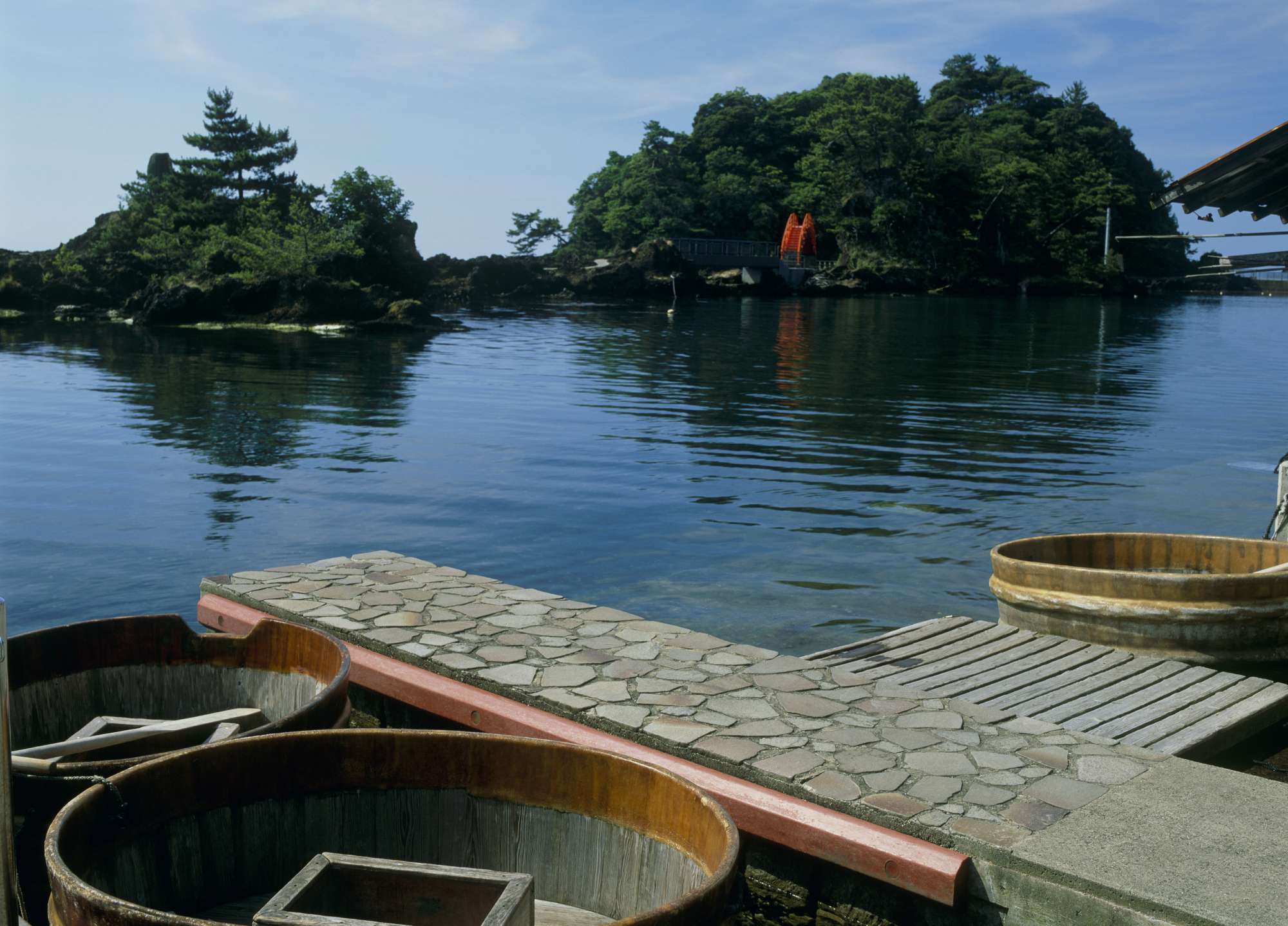
You can experience a traditional boat ride, though quite different from the one that you use to get to the island. Called ‘tarai-bune’, these large wooden wash basins have been converted into small boats, agile and well made for fishing, their original purpose. Entitled ‘isonegi-ryo’, the boats had clear bottoms, which let the fishermen have better sights on what was below the water.
If you are keen for something a little shinier, why not learn about the island’s connection with gold? With a history spanning nearly 400 years, the Sado Gold Mine was the biggest in Japan. You can explore some of the tunnels and see some of the facilities of the mine that were in operation when the mine was active. Guided tours are also available for those interested in learning even more about the mine. If you want to strike it rich, the Sado Nishimikawa Gold Park offers gold panning experiences, where you can even look for gold in nearby rivers! Any gold that you do find can also be turned into a souvenir before you leave.
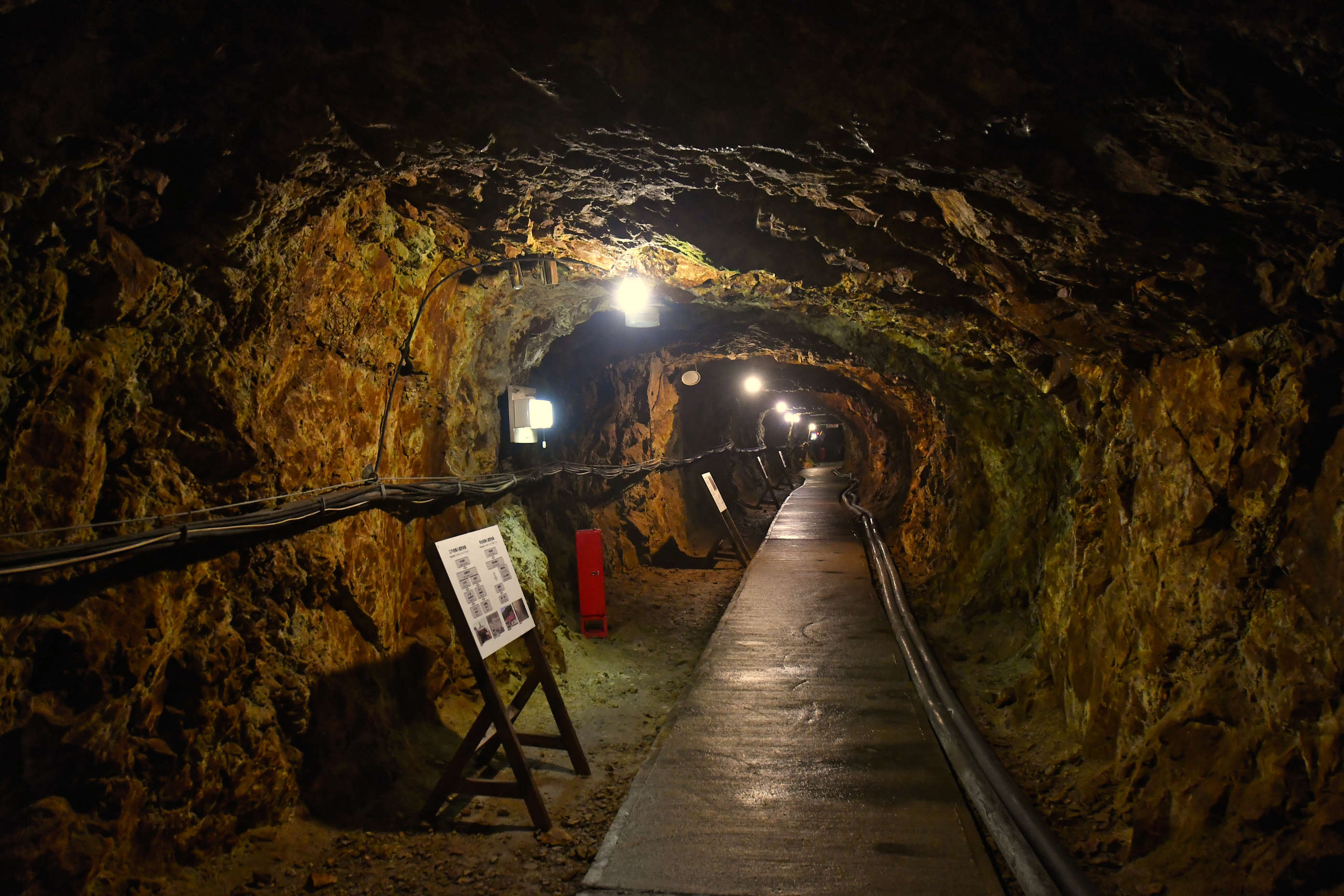
Kiyotsu Gorge
Located in the Tokamachi area, Kiyotsu Gorge offers up some of the best scenery and views in the prefecture. Known as one of the top 3 gorges in the country (alongside Kurobe Gorge in Toyama and Osugi Gorge in Mie), it is beautiful in all seasons, but especially winter. With a volcanic history, the gorge is filled with columnar joints, with the Kiyotsu River winding its way through the valley.
Following an approach to a viewpoint inside the gorge known as the Tunnel of Light, you can be mesmerised by the surrounding art, to then be met with an expansive view of the scenery.
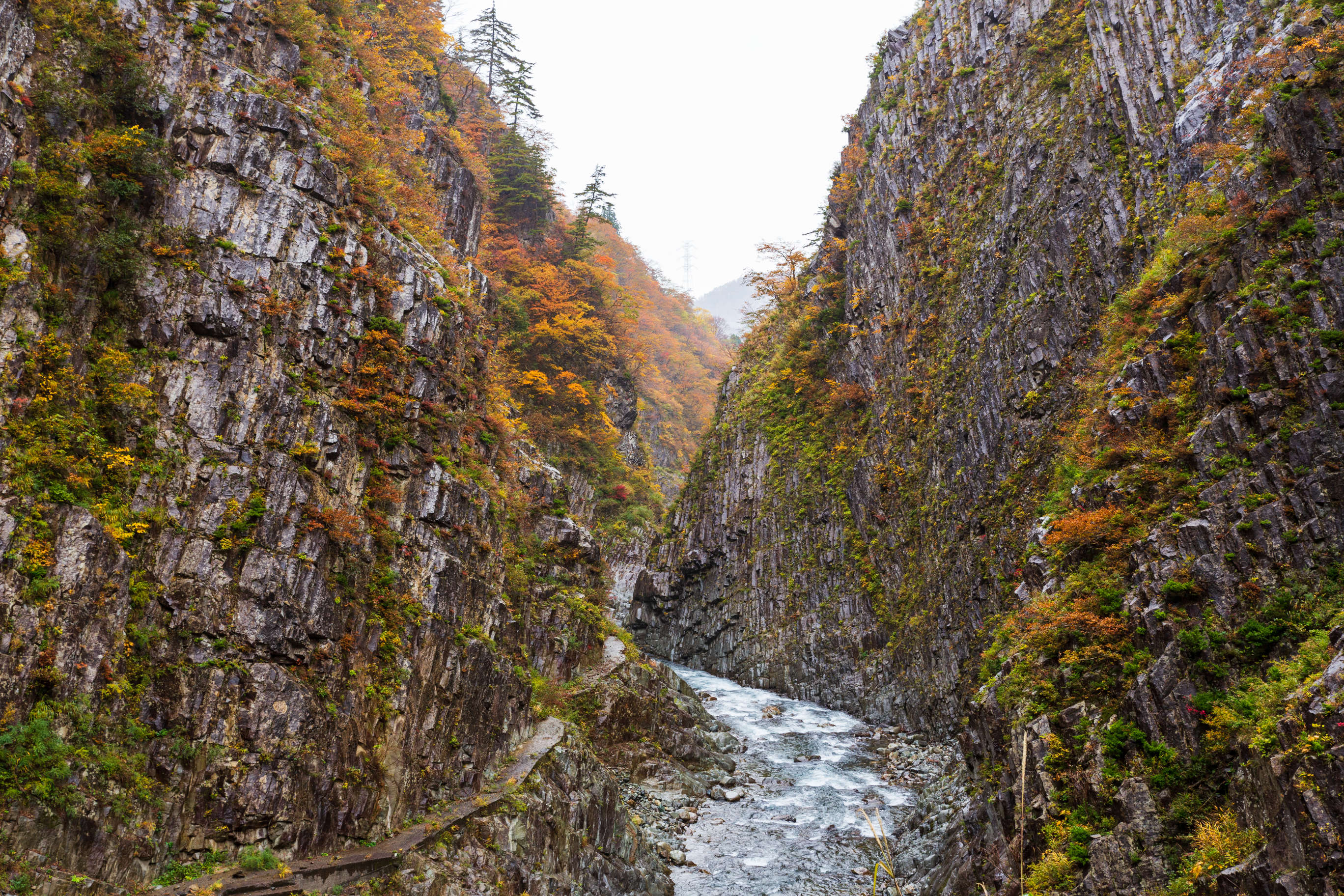
Originally turned into an art piece during the 2018 Echigo-Tsumari Art Triennale, 2024 also signifies the 9th holding of the Triennale, with the entire Tokamachi and other areas around Niigata (as a whole being called the Echigo-Tsumari Art Field) being filled to the brim with marvellous art installations. Officially starting in July and running to November of this year, this mixing of art and nature is not to be missed!
Naenataki Falls
Continuing our exploration of Niigata’s wonderful natural scenery, we move onto Naenataki Falls, one of Japan’s top 100 Waterfalls. Found in the Myoko area, famous for Mt. Myoko, skiing, and onsens. Standing at 55 metres, the volume of water that cascades over the top is breathtaking, as is the loud sound the water makes! From the observation deck, you can see that the waterfall is also perfectly set within steep rock walls, with greenery encasing the outside. The amount of water that comes through the area varies depending on the season that you visit, springtime can mean a higher amount due to snowmelt from surrounding mountains, while winter can mean less. Autumn is a sight to see, as the stunning colours of the changing foliage mix with the power of the waterfall. You can reach the falls by alighting at Myokokogen Station and taking a short taxi ride. The walk to the viewpoints is also rather quick, taking only around 15 minutes, but be sure to enjoy your time!
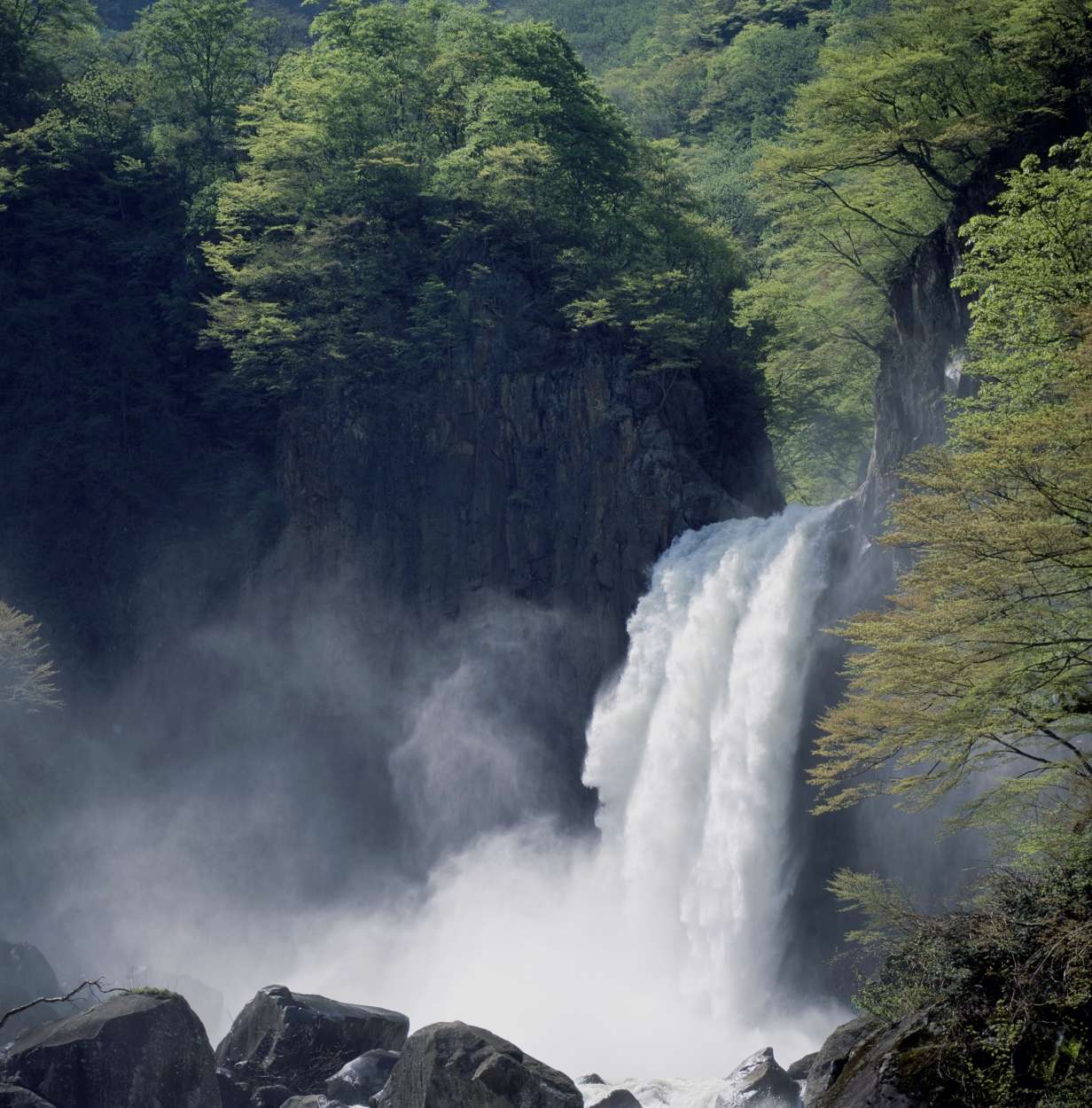
Northern Culture Museum and Ito Estate
Your trip up to Niigata is not complete without a museum visit! At the Northern Culture Museum and Ito Estate in the small town of Soumi, you can learn about the Ito family that once resided in the area, and the wealth of treasures that they accumulated. The Ito Family was once the largest landowners in the Echigo Region, building a fortune through mercantile trades. Built on a large plot of land outside of Niigata City, the museum and estate also has a massive wisteria tree that dates back to the late Edo Period. It blooms in April and May, showering visitors with purple blossoms. With various facilities such as a cafe, multiple restaurants serving local cuisine, you can make the most of your time in the area!
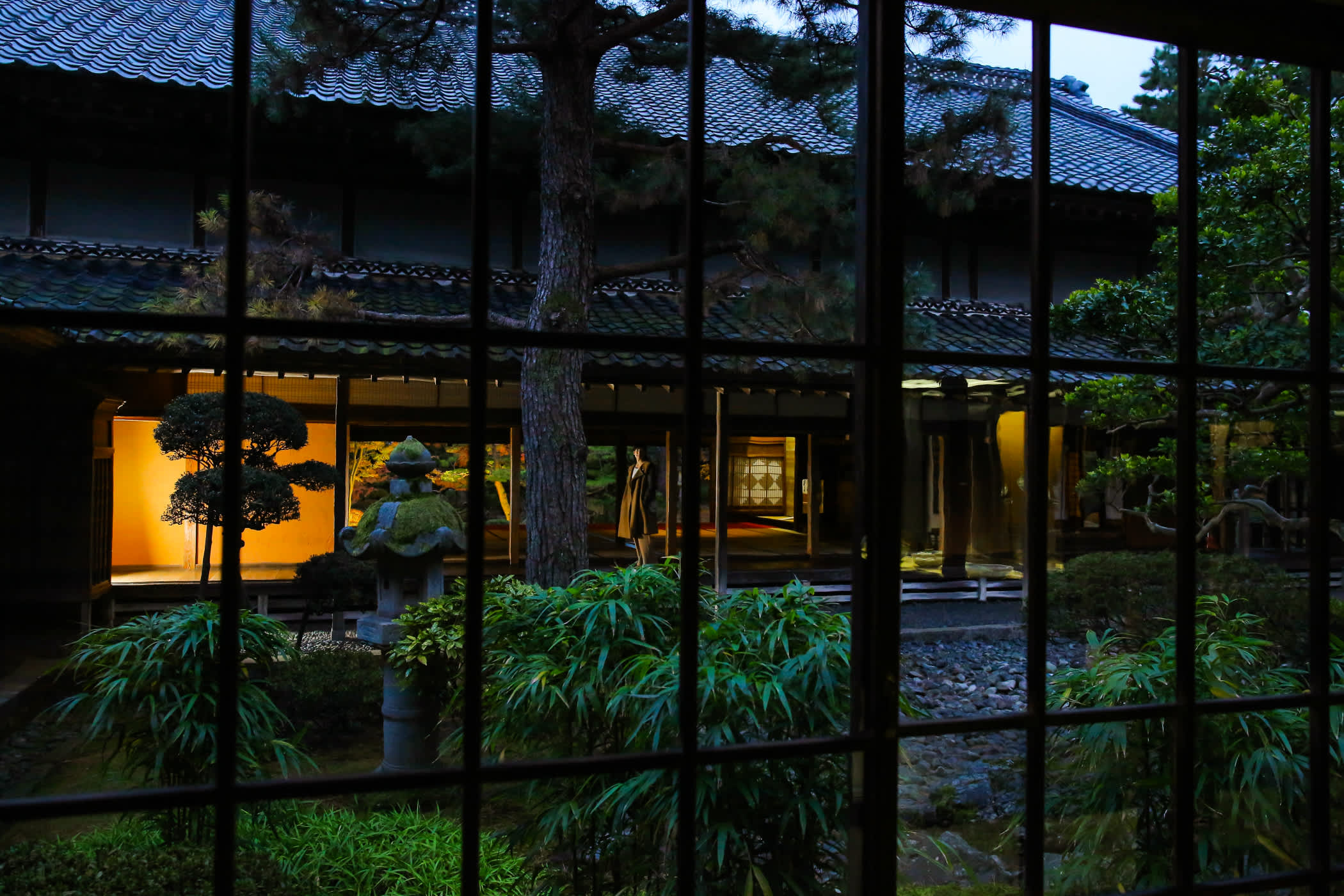
You can reach the museum by taking a bus from the Bandai City Bus Station, a short walk from Niigata Station.
Takada Castle Site Park
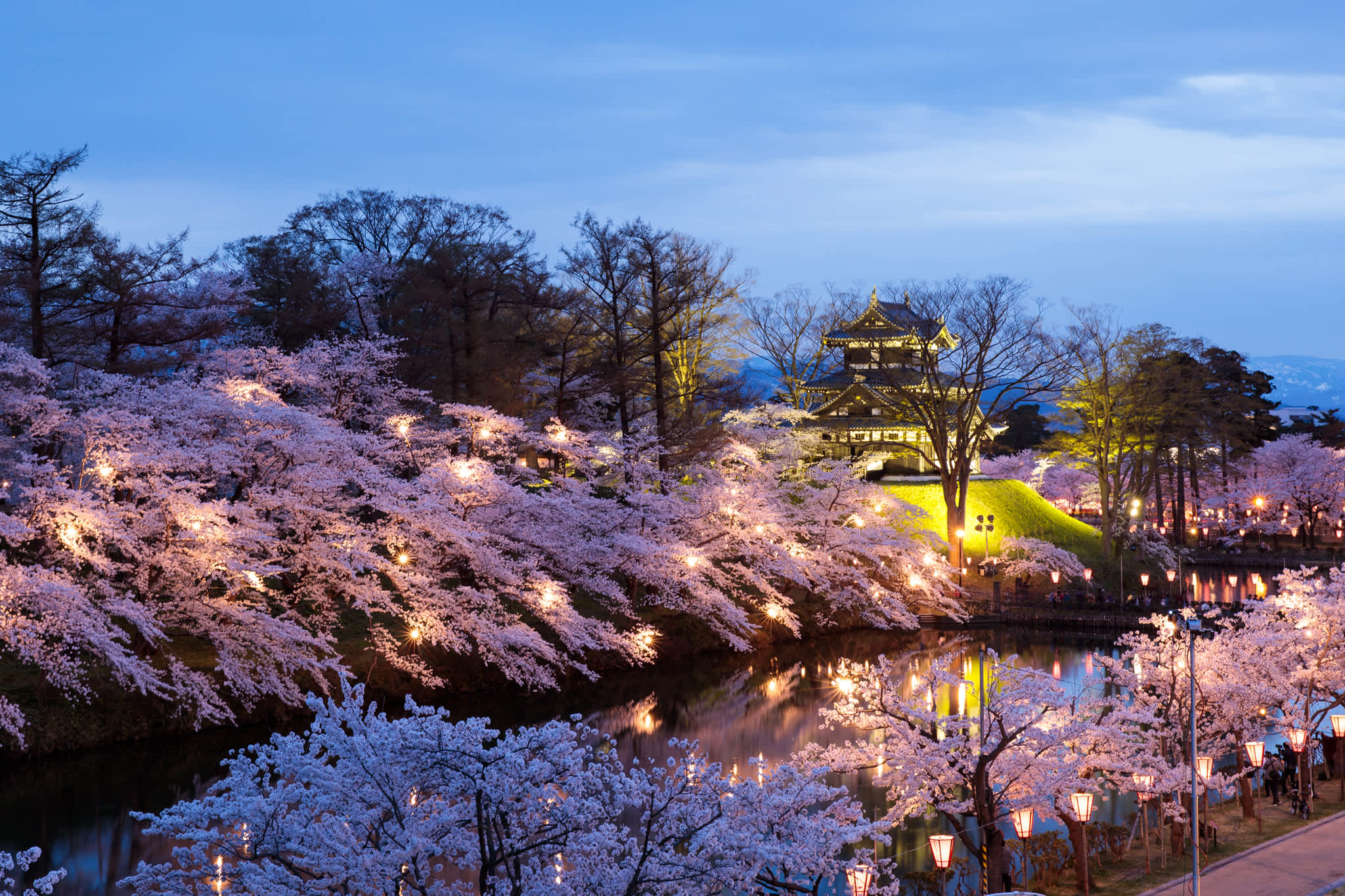
As spring approaches, there is no better place to be than Takada Park in Joetsu City. With a rebuilt castle tower called a tenshu from Takada Castle in the park, the grounds allow one to explore the history of the area, while at the same time enjoy the beautiful nature and flora. The park is big, covering around 50 hectares, slightly smaller than Shinjuku Gyoen in Tokyo. It was created in 1907, making the area more than 115 years old. Spring and summer bring some of the most famous attractions of the area, which include the yearly Cherry Blossom and Lotus Blossom festivals. The Cherry Blossom Festival includes 4,000 trees and an additional 3000 lanterns that come to life in April, while the Lotus Festival fills the park moat with blooming lotuses from July until August.
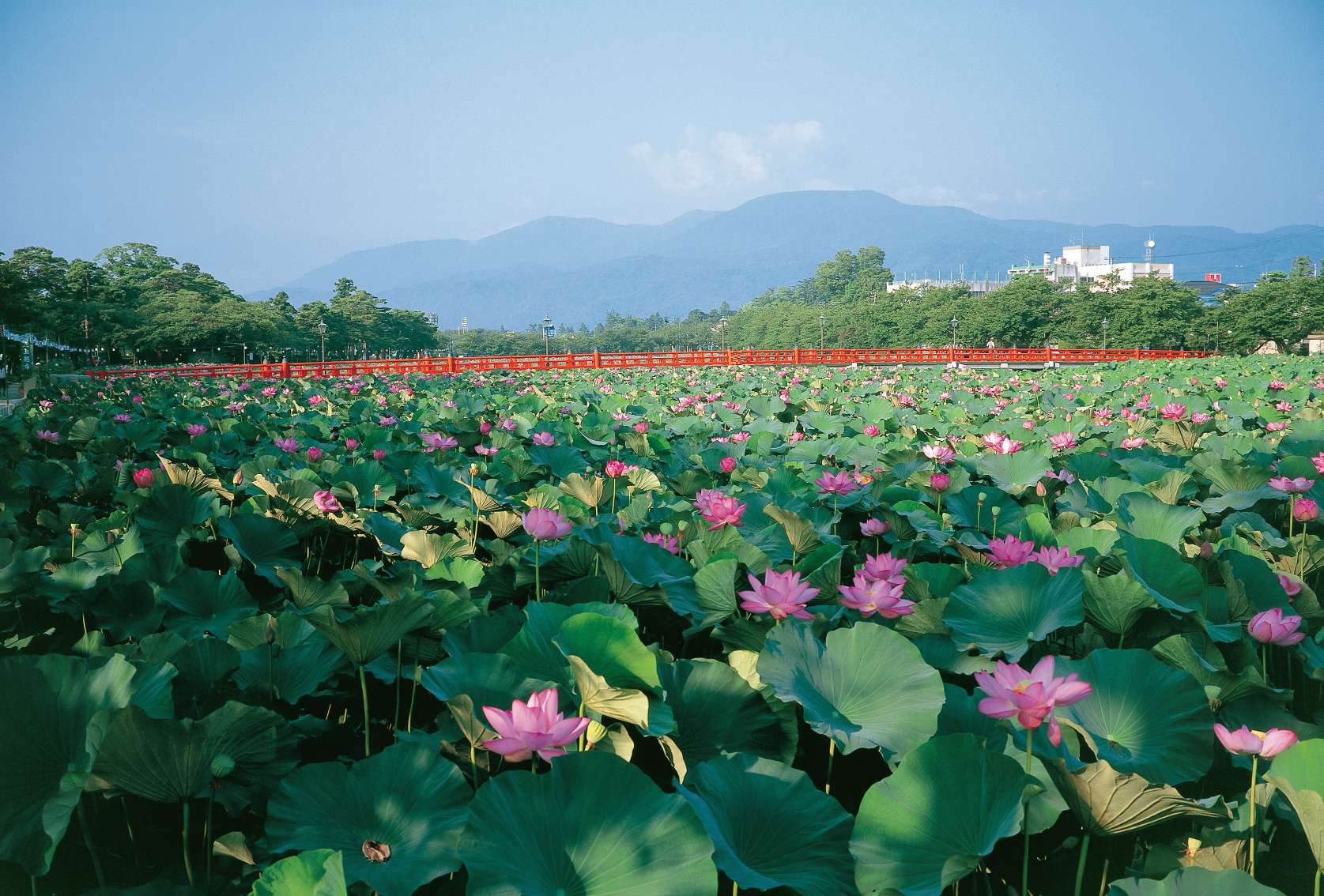
Easily accessible by train and foot by taking the shinkansen to Joetsumyoko Station and then transferring to Takada Station, Takada Castle Site Park is a must visit example of beautiful Japanese gardens.
Niigata Prefecture is a quick ride on the shinkansen from Tokyo, taking around 2 hours to reach Niigata City, even quicker if you are stopping off at Echigo-Yuzawa, and is a must for any travel itinerary. From Sado Island and its golden history to Takada Castle and its magical cherry blossoms, it affords any and all travellers something to remember!
To stay up to date with all the latest happenings in Japan follow us on Facebook or Instagram!


























































